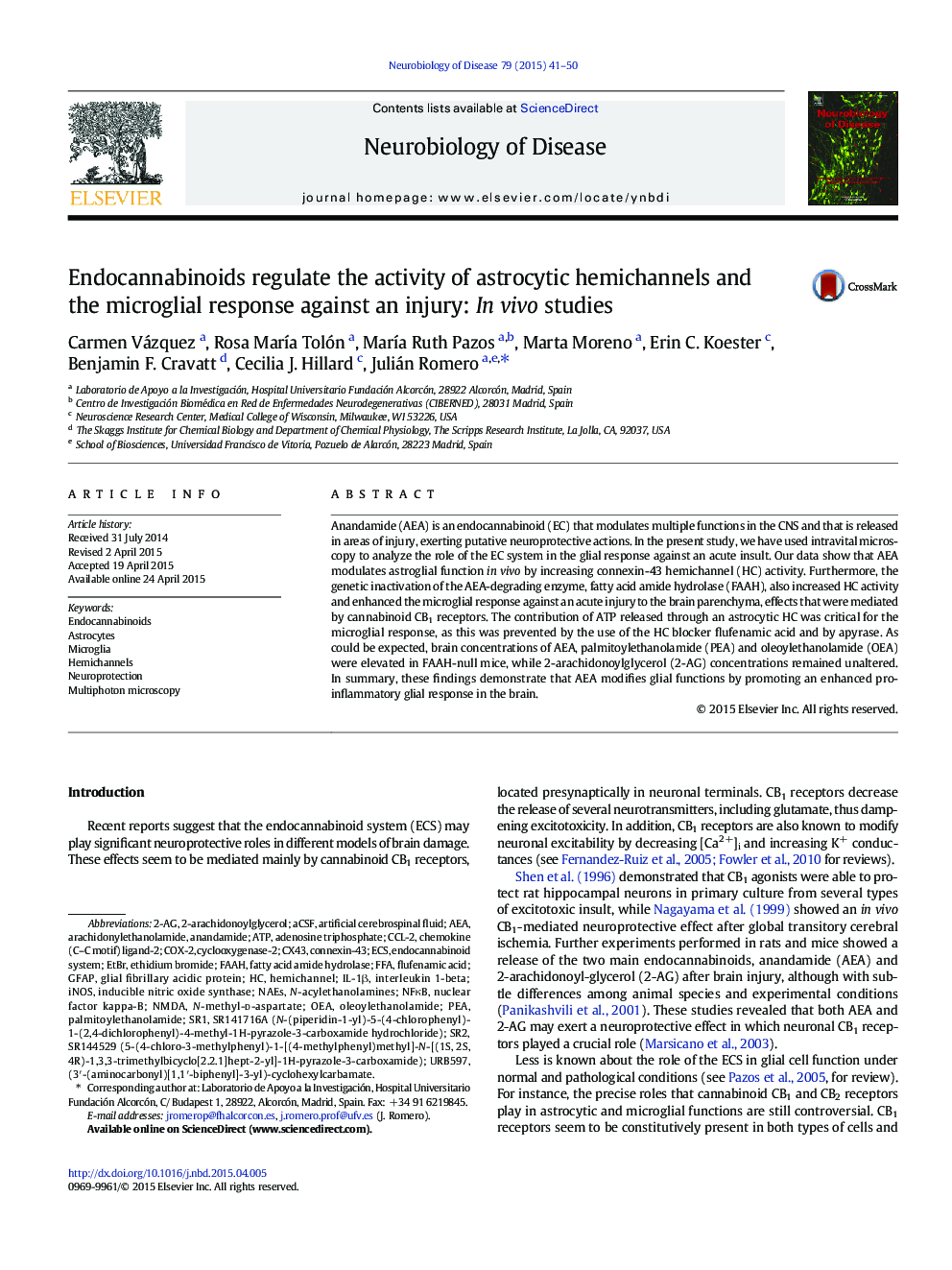| Article ID | Journal | Published Year | Pages | File Type |
|---|---|---|---|---|
| 3069283 | Neurobiology of Disease | 2015 | 10 Pages |
•Endocannabinoids regulate glial activity in the mouse brain.•Anandamide stimulates astrocytic and microglial functions in vivo.•Anandamide facilitates the opening of membrane hemichannels in astrocytes.•Anandamide accelerates the response of microglial cells after a focal injury.
Anandamide (AEA) is an endocannabinoid (EC) that modulates multiple functions in the CNS and that is released in areas of injury, exerting putative neuroprotective actions. In the present study, we have used intravital microscopy to analyze the role of the EC system in the glial response against an acute insult. Our data show that AEA modulates astroglial function in vivo by increasing connexin-43 hemichannel (HC) activity. Furthermore, the genetic inactivation of the AEA-degrading enzyme, fatty acid amide hydrolase (FAAH), also increased HC activity and enhanced the microglial response against an acute injury to the brain parenchyma, effects that were mediated by cannabinoid CB1 receptors. The contribution of ATP released through an astrocytic HC was critical for the microglial response, as this was prevented by the use of the HC blocker flufenamic acid and by apyrase. As could be expected, brain concentrations of AEA, palmitoylethanolamide (PEA) and oleoylethanolamide (OEA) were elevated in FAAH-null mice, while 2-arachidonoylglycerol (2-AG) concentrations remained unaltered. In summary, these findings demonstrate that AEA modifies glial functions by promoting an enhanced pro-inflammatory glial response in the brain.
